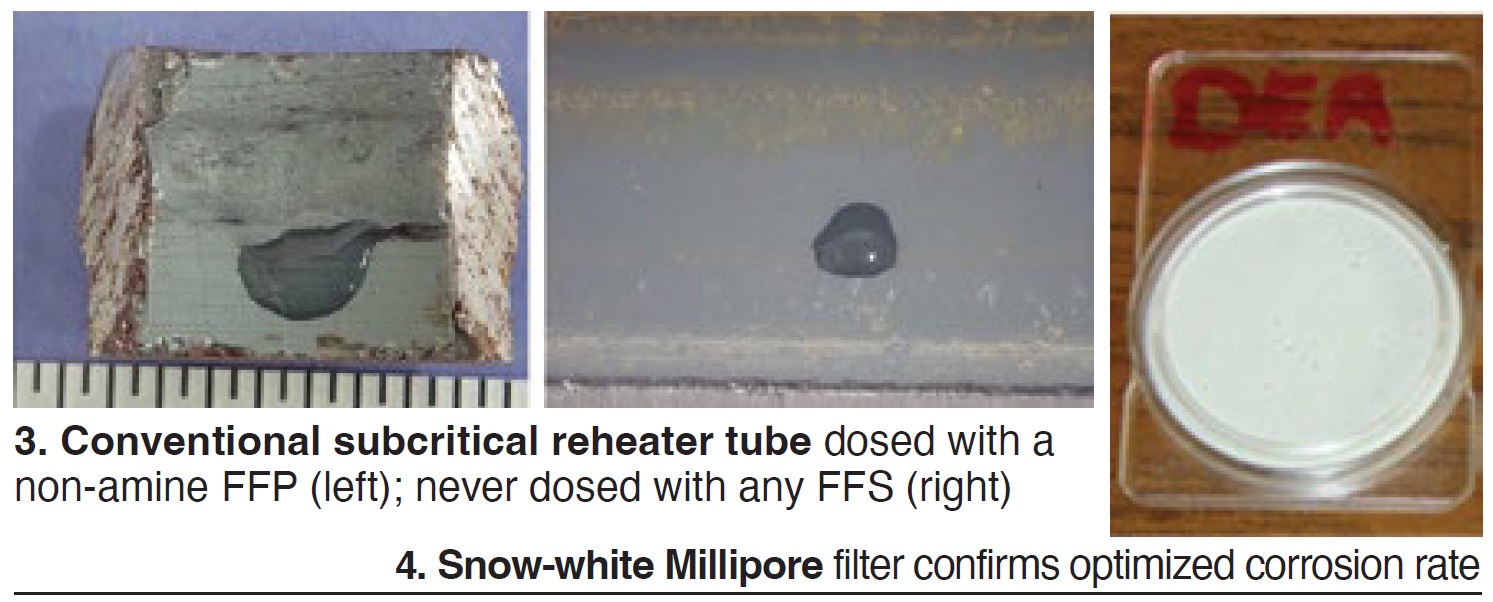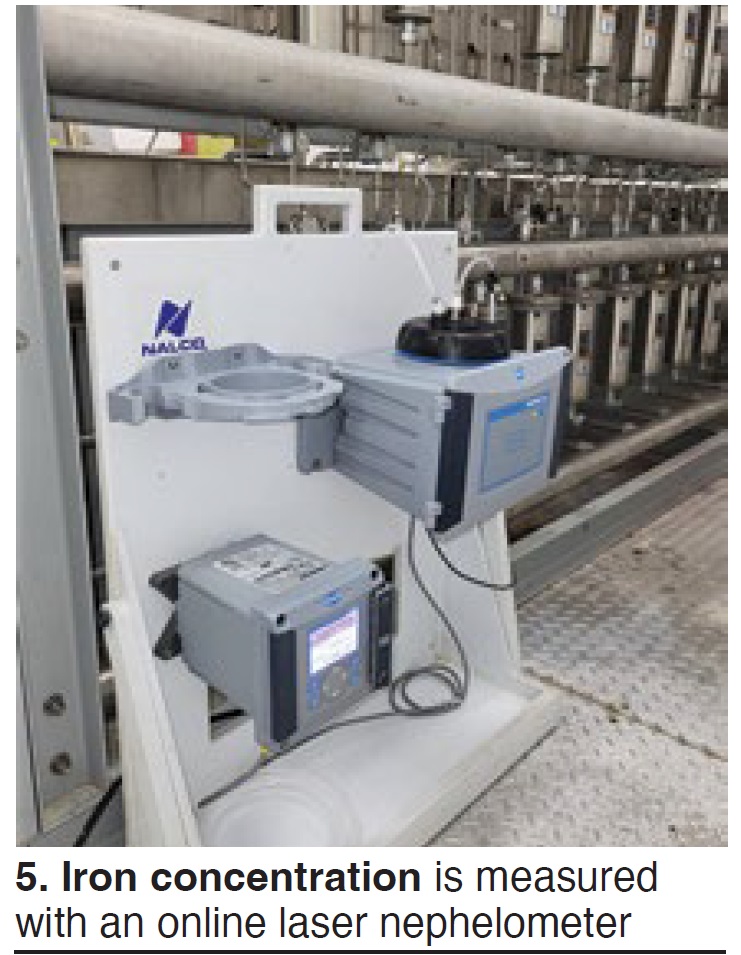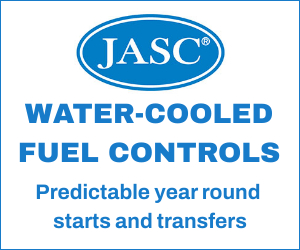Steven C Stultz, Consulting Editor
 Barry Dooley, Structural Integrity Associates (UK), opened the Cycle Chemistry Workshop on Day One of the HRSG Forum’s 2023 Conference and Vendor Fair, June 12 – 15, at the Renaissance Atlanta Waverly, with Film-forming substances for combined-cycle/HRSG plants: History, background, and needs.
Barry Dooley, Structural Integrity Associates (UK), opened the Cycle Chemistry Workshop on Day One of the HRSG Forum’s 2023 Conference and Vendor Fair, June 12 – 15, at the Renaissance Atlanta Waverly, with Film-forming substances for combined-cycle/HRSG plants: History, background, and needs.
He first presented IAPWS nomenclature background for film-forming substances (FFS), made up of two categories:
- Film-forming amines/amine products (FFA/FFAP).
- Proprietary non-amine-based film-forming products (FFP).
Most experience to date, he explained, is with the first category. Dooley then gave clear visual representations on FFA chemical structure (Fig 1) and the common topic of hydrophobicity.

One overall caution came early: “Dancing water balls,” he explained, “are thought to indicate protection, but we now know that hydrophobicity does not necessarily mean protection” (Fig 2). This would be explained further with examples, such as Fig 3. In these conventional subcritical-plant reheater tubes, the example on the left was dosed with a non-amine FFP. The example on the right was never dosed with any FFS.
Dooley clarified that “It is unclear if hydrophobicity is a key aspect of corrosion control. In solution, some FFAs can actually be hydrophilic and increase surface wetting.”
This message reinforces the complicated nature of simple visual assumptions.
Detailed FFS background is available in Film-forming substances: Sixth International Conference, CCJ No. 75, p 75, and A wakeup call on film-forming substances, CCJ No. 60, p 12.
One important presentation takeaway was the list below of “Key highlights from fossil and combined-cycle/HRSG FFS applications”:
- There are universal reductions (measured) in feedwater Fe and Cu transport, but “no equivalent understanding” of the mechanisms of oxide growth reductions.
- There are general (visual) observations of hydrophobic films on water-touched surfaces, but “it is underlined that hydrophobicity does not prove presence of a film or any protection.” Refer back to the sketch of control angle in Fig 2.
- There is generally good shutdown protection of water-touched surfaces.
- Film formation remains “very questionable” on steam-touched surfaces.
- Studies of adsorption of film onto metal surfaces as a function of FFS hopefully will provide information for changing the FFS applied.
- Arresting flow-accelerated corrosion (FAC) is difficult to “see” other than by reduction of iron. Air-cooled-condenser corrosion/FAC is the exception. See report ACC.02: Guidelines for internal inspection of air-cooled condensers, available at no cost on https://acc-usersgroup.org
- There are FFS application problems reported in some plants worldwide: internal deposits, tube failures especially under deposit corrosion, formation of “gunk” (gel-like) deposits in drums and on heat transfer surfaces, in steam turbines, and strainers/filters. Dooley offered detailed examples.
Looking forward, Dooley outlined the “path to needed research.” Clarifying first that most work to date has been with metal surfaces rather than oxide surfaces in operating plants, Dooley highlighted the need for fundamental work on the “effect of FFS on growth mechanisms of Fe, Cu, and Cr oxides in water and steam.”
Similarly, “much work is needed in the future on the effect of a wide range of FFS additions to allow more rugged and permanent advantages such as the ability to change from one FFS to another.”
Current activity and discussion are the pathway to an IAPWS Certified Research Need (CRN) by the International Association for the Properties of Water and Steam Power Cycle Chemistry Group.
In summary, he stressed application of two key rules, as the industry awaits a more complete understanding:
Rule 1, Make sure plant chemistry is optimized before application of an FFS.
Rule 2, Conduct a comprehensive review before any FFS application. Refer to IAPWS TGD8-16 (2019), Application of film-forming substances in fossil, combined cycle, and biomass powerplants, in particular Section 8, available gratis at http://iapws.org.
Doug Hubbard, retired manager of Chemical Engineering at American Electric Power, followed Dooley with Do you need a film-forming substance? How do you know?
He discussed corrosion protection during layup conditions, outlining AEP’s guidelines to stop offline corrosion. Principal AEP options are:
- Dry layup: Completely remove and keep all water and moisture off metal surfaces (ideal relative humidity: below 40%).
- Use FFS to keep water from coming in contact with metal surfaces.
- Wet layup: Remove and keep all oxygen out of water. Use nitrogen blanket.
- Keep fluid moving.
These are in order from best to worst, but “any one of them is better than doing nothing,” stated Hubbard. He also reviewed “layup stumbling blocks,” such as on-line schedule uncertainties.
He then covered standard “corrosion protection during operation,” citing the IAPWS limits for total feedwater iron:
- Economizer inlet OT < 1 ppb (actual, optimized < 0.5 ppb).
- Economizer inlet AVT (O) < 2 ppb (actual, optimized < 0.5 ppb).
- Economizer inlet AVT (R) < 2 ppb (actual, optimized < 2 ppb).

One basic test shown for iron is the Millipore: snow white should indicate optimized corrosion protection (Fig 4). Said Hubbard, “I have never seen Millipores snow white and total iron not meeting IAPWS limit.”
So, the question on need for FFS remains.
He then offered some “experienced-based opinions:”
- Layup protection:
- If capacity factor is below 15%, FFS will not have time to “film cycle.”
- If capacity factor is above 60%, FFS could be too expensive to feed.
- If unit runs hard and is then down for a long period of rime, this could be an ideal use of FFS.
- In-service corrosion protection:
- FFS is not needed for AVT O/OT units.
- If there is significant two-phase FAC, FFS could be part of the solution once cycle chemistry is optimized.
- Failure mitigation with FFS:
- Good option for pitting attributed to oxygenated stagnant water.
- Unclear for pitting due to chloride/sulfates.
- Unclear for under-deposit corrosion.
- No known value for existing corrosion fatigue (driven by strain).
- However, if you are trying to prevent corrosion fatigue, FFS may be of value by slowing down the corrosion part of corrosion fatigue.
Hubbard ended with important guidance: “Make sure you define clearly with your FFS manufacturer the goals expected while feeding FFS, with very specific measurables to determine if goals are being met. The FFS manufacturer needs to sign off on these goals and measurables,” he emphasized.
David Little and Bruce Opsahl, Nalco Water, were next with HRSG protection with Powerfilm™ 10000, a non-amine FFS. While outlining the various reasons for considering filming technology, Little emphasized that FFS applications are “not a substitute for a good base steam-cycle chemistry program.”
Nalco introduced Powerfilm 10000 as “a non-amine filming corrosion inhibitor designed to protect powerplant boiler systems from offline corrosion and stresses caused by cyclical operation.”
Little and Opsahl offered a case study of a 2 × 1 combined cycle in north Texas where market-driven layup practices had raised concerns about asset longevity. The plant faced wet layup of the HRSGs for long periods of time. A program was launched to reduce corrosion product transport, measured as total iron, to 5.0 ppb (EPRI action level).
 Powerfilm was injected at the condensate-pump discharge. A low continuous dose (0.4 to 2.0 ppm based on feedwater flow rate) was applied during baseload operation, cycling load, and two–shifting on/off with hot standby. A high continuous dose (5 to 10 ppm) was applied for several days prior to shutdown and wet layup (1 month or less) or dry layup.
Powerfilm was injected at the condensate-pump discharge. A low continuous dose (0.4 to 2.0 ppm based on feedwater flow rate) was applied during baseload operation, cycling load, and two–shifting on/off with hot standby. A high continuous dose (5 to 10 ppm) was applied for several days prior to shutdown and wet layup (1 month or less) or dry layup.
Using an online laser nephelometer, 3000 iron concentration data points were collected over a four-month period (Fig 5). Filter pad (Millipore) grab samples also were used.
Their summary of results showed that the nephelometer gave economic, portable, real-time collection of iron transport data, and concentrations remained below the target. Also, “iron reduction continued despite increased cycle events of the steam turbine.”
Dale Stuart, ChemTreat, then presented The use of FFA to mitigate corrosion in HRSG units and offered various examples in the US. He said the purpose is to “provide a passive layer when conventional chemistry fails.”
Based on the examples shown, Stuart summarized that:
- The FFAs used formed a bonded layer of persistent film.
- The FFAs were volatile and traveled through the system.
- Treatment was thermally stable, but required increased dosage at higher temperatures because of its higher volatility and desorption coefficient.
Eric Zubovic, Veolia, then discussed the Impact of film forming amines on condenser efficiency concluding that use improves condenser performance by promoting dropwise condensation on the tubes. He concluded that polyamine (FFA) increases heat-transfer efficiency, noting that a continuous feed (at the proper feed rate) is needed to maintain dropwise condensation. He also concluded that “turbine backpressure can be improved between 0.42 and 0.60 in. Hg with dropwise condensation.”
Chris Dumas, Kurita, presented Cetamine® treatment of an HRSG in Spain, a presentation also made at the 2023 IAPWS International Conference on Film Forming Substances. His conclusions: (1) Cetamine G85X is offering beneficial protection during cycling operation and preservation periods. (2) It can be used as an additional treatment to conventional AVT or AVT+PT. (3) It has reduced startup times and use of blowdown. For more detail, see Film-forming substances: Sixth International Conference, CCJ No. 75, p 75.
Many interesting questions and discussions followed these presentations. Topics included good chemistry versus FFS in a new baseload plant, FFS selection for cycling units, iron sampling processes including filters, methods of pH control, and FFS versus changes to materials.
Dooley’s Q&A summary: “Excellent questions; we know that many plants do not do their homework before application of an FFS. The pre-application process is the most important, and it is critical to first review IAPWS Technical Guidance Document TGD8-16 (2019),” freely available at www.iapws.org.
Contact Dooley (bdooley@structint.com or bdooley@IAPWS.org) for further information on FFS and the IAPWS FFS conferences.









